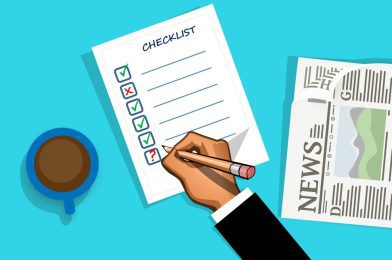A little bit of anxiety can be a normal and even helpful emotion in certain situations. It can motivate you to prepare for challenges and perform at your best. For example, if you have a big exam or presentation coming up, feeling a little bit of anxiety can help you focus, study harder, and perform to the best of your ability.
On the other hand, excessive anxiety can be debilitating and interfere with your daily life. It’s important to find a balance and not let anxiety take over. If you feel like your anxiety is overwhelming or disrupting your life, it’s essential to seek help from a mental health professional. They can help you develop coping strategies and work through any underlying issues contributing to your anxiety.
Creating a checklist can be a helpful tool for managing anxiety in several ways:
- It helps you prioritize tasks: By writing down everything you need to do, you can see the most important jobs and tackle them first. This can help reduce feeling overwhelmed, which can contribute to anxiety.
- It helps you stay organized: A checklist can help you keep track of your progress and avoid forgetting important tasks. This can help reduce the stress and anxiety of feeling disorganized.
- It helps you feel more in control: Having a clear action plan can give you a sense of control over your life and reduce anxiety.
- It can serve as a reference: When you’re feeling anxious, you can refer to your checklist to remind yourself of what you’ve accomplished and what you still need to do. This can help you feel more focused and less anxious.
Creating and using a checklist can be a simple but effective way to manage anxiety and reduce stress.
Here are some things that a photographer might include on their checklist before a big job:
- Camera equipment: Make sure you have all the necessary lenses, batteries, memory cards, and any other equipment you need.
- Lighting equipment: If you’re using artificial lighting, bring all the necessary lights, stands, and modifiers.
- Backup equipment: It’s always a good idea to bring backup equipment if something goes wrong. This might include an extra camera body, lenses, batteries, and memory cards.
- Location scouting: If you’re shooting on location, scout the area beforehand to get a sense of the available light and identify any potential challenges or issues you may need to work around.
- Client information: Make sure you have all the contact information for the client, including their name, phone number, and email address.
- Shot list: If the client has provided a shot list, review it beforehand to ensure you understand what they’re looking for and can plan accordingly.
- Model releases: If you’re working with models, be sure to have the necessary model releases on hand.
- Insurance: Depending on the job, you may consider bringing your liability insurance documents.
- Business cards: It’s always a good idea to bring business cards to a big job in case you meet any potential clients or collaborators.
- Snacks and water: It’s essential to stay hydrated and fueled throughout the day, so be sure to bring some snacks and water with you.

